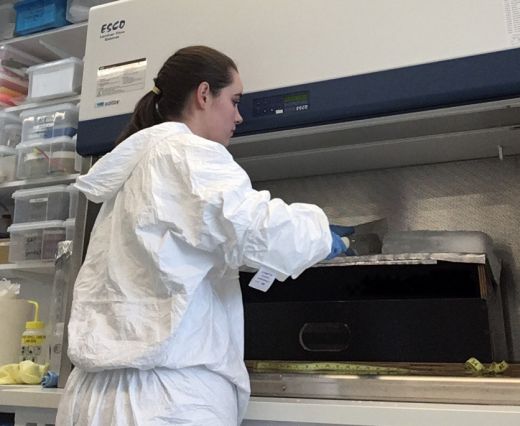
Microplastic contamination has been identified in Antarctic sea ice by an Institute for Marine and Antarctic Studies (IMAS)-led research team, including researchers from the .
, the new study analysed an ice core collected in East Antarctica in 2009 and identified 96 microplastic particles from 14 different types of polymer.
IMAS student and lead author Anna Kelly said plastic pollution has previously been recorded in Antarctic surface waters and sediments as well as in Arctic sea ice, but this is thought to be the first time plastic has been found in Antarctic sea ice.
“The remoteness of the Southern Ocean has not been enough to protect it from plastic pollution, which is now pervasive across the world’s oceans,” Ms Kelly said.
“Forming from seawater, around 80 per cent of Antarctic sea ice melts and reforms each year, providing seasonal opportunities for microplastics on the sea surface to become trapped in the ice.
“The ice core we analysed was from coastal land-fast sea ice and averaged almost 12 particles of microplastic per litre.
“While this concentration is lower than that found in some Arctic sea ice samples, the 14 different polymer types we identified is only slightly less than the 17 found in Arctic studies.
“The microplastic polymers in our ice core were larger than those in the Arctic, which may indicate local pollution sources because the plastic has less time to break down into smaller fibres than if transported long distances on ocean currents.
“Local sources could include clothing and equipment used by tourists and researchers, while the fact that we also identified fibres of varnish and plastics commonly used in the fishing industry suggests a maritime source,” she said.
Ms Kelly said the study’s findings indicate sea ice has the potential to be a significant reservoir for microplastic pollution in the Southern Ocean.
“Rather than sinking to the deep ocean, the entrapment of microplastics in Antarctic sea ice allows them to persist for longer near the sea surface.
“This would make them more available for consumption by marine organisms such as krill, a keystone species in Southern Ocean ecosystems, and consequently marine predators higher up the food chain.
“It is worth noting that plastic contamination of West Antarctic sea ice may be even greater than in our ice core from the East, as the Antarctic Peninsula hosts the bulk of the continent’s tourism, research stations and marine traffic,” Ms Kelly said.
Image: Lead author Anna Kelly analysing an ice core.








